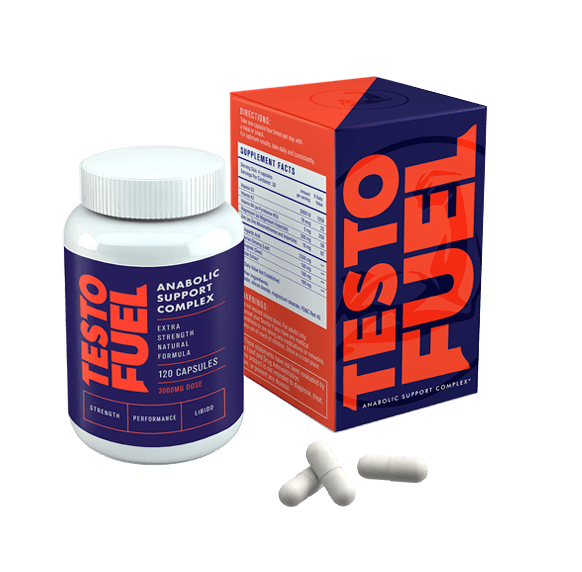
This three-phase muscle building workout plan maximizes muscle mass, builds bar-bending strength and shreds your abs to within an inch of their life.
If you’re here because you want to get jacked, plain and simple, you’re in the right place.
This is a program designed with one goal in mind – gains. And it’s the most comprehensive program you’ll find.
If you’re a regular gym goes with a good base of fitness then this program will accelerate your results. If you’re a beginner, it’ll eat you alive – you’d probably be better trying one of our less intense programs to begin with.
If this workout plan suits your needs, let’s get going…
Maximum results in minimal time.
What does this program cover?
| Goal: | Muscle building, strength and power |
| Aimed at: | Intermediate/advanced level men and women |
| Program duration: | 12 weeks |
| Workout duration: | 60 minutes |
| Equipment needed: | Barbell, dumbbell, resistance machines |
What is The Mass Building Workout Plan?
To achieve the best results you’re going to have to pull up your socks, double scoop your pre workout and get in the zone.
This program takes no prisoners in its mission to build as much muscle as is humanly possible in only 3 months.
We’re looking at targeting every muscle, every fiber and every angle in this comprehensive strength program.
Here’s what you’ll achieve:
- Build as much muscle as possible in 12 weeks
- Improve strength and power
- Increase performance and boost health

The Key to Building Muscle Mass
When it comes to maximizing muscle mass or hypertrophy there are a few simple rules you should follow.
Read, listen and apply these guidelines and you’ll soon be on your way to armour-like gains.
You can build muscle with any rep range
Once upon a time it was thought that you could only build muscle in the traditional ‘hypertrophy rep range’ of 8-12.
But as more and more research comes out though, we’re realizing that you can create an adaptation at pretty much every rep range – from heavy to light.
That’s because your muscles are composed of different types of muscle fibers. Some are stimulated with heavy weight. Others with lighter weights.
Varying the number of reps you use can help you target the fibers you hit.
This program cycles heavier loads with lighter ones. That way you’ll target as many of your muscle fibers as possible and optimize results.
Training intensity matters
What’s the key rule of muscle growth, regardless of which rep range you choose?
That’s right. Intensity.
We want you to focus on progressive overload in this program. If we ask you to choose a weight for 6 reps, it means that you shouldn’t be able to do any more than that.
We’re not telling you to go to failure where you’re muscles are trembling and you just can’t complete the rep. But choosing challenging weights that you’re unaccustomed to is key to building muscle fast.
Using progressive overload principles will allow you to keep pushing the boundaries of muscle mass and strength. Keep monitoring your progress – as soon as a weight is beginning to feel lighter and easier, increase it.
For example, rather than choosing the same weight dumbbells you’ve used for the last few weeks, force your body to adapt by constantly aiming to test yourself.
No matter whether it’s a high or low rep range.
Volume is the key to greater gains
Lifting weights for high reps and sets is a great way of increasing workout volume.
VOLUME = TOTAL REPS X LOAD
There’s a huge amount of evidence showing that high intensity strength training with higher volume results in significant muscle mass gains [1].
In fact, because you can build muscle at any rep range, some expert researchers suggest that volume is actually more important than intensity [2].
It’s currently thought that volume triggers protein synthesis much more effectively then intensity – and that results in higher muscle cell levels.
Of course, to leave no stone unturned we’ll be combining volume and intensity though to give you a double-barrel stimulus for major gains.
Take the full body approach
There’s no room here for single muscle split training.
If you really want to hit those high volume markers, burn more calories and challenge each muscle multiple times per week then full body training is the way forward.
Years ago it was thought that full body training was only for beginners. But there’s a huge tidal wave of research coming out that shows you’ll build just as much muscle from full body sessions as you will from splits [3].
As long as weekly volume is high.
Why?
With full body workouts you might not complete as many sets per workout, but because you’re hitting the muscle multiple times per week, you can quickly increase volume – and intensity.
And on a similar note, when you use splits you naturally get tired. After all, your’e targeting the same muscle set after set – that’ll quickly result in accumulative fatigue.
But when you follow full body training you shift emphasis from muscle to muscle which helps you to maintain strength while reducing fatigue.
Rest, recover and grow
There’s an old saying…
You break down muscle in gym, feed it in the kitchen, and grow when you’re asleep
What this means is that while lifting weights provides a stimulus for growth, muscle adaptation comes from nutrition and rest.
We suggest that on your rest days you focus on relaxation, full recovery and eating plenty of healthy foods.
That way you’ll be fueling your body the right way and supporting what’s happening in the gym.

How Does The Muscle Building Transformation Plan Work?
There are two main aims to this 3 month program:
- Increase weekly total volume without causing excessive fatigue
- Lift as heavy as you can for each rep range
And how are you going to achieve this?
High frequency training, that’s how.
You’ll be using tried and tested, no frills exercises that are guaranteed to build huge slabs of muscle.
They’ll also get you as strong an ox too.
You’ve got 3 mandatory sessions per week. The forth session is for the ultra motivation gains chaser. We’ve leave it up to you, but if you can recover properly between sessions then go for 4.
The big three lifts and accessory exercises
In each of the three blocks you’ll be focusing on 3 big lifts – the squat, the bench press and a variation on a big pull or row.
These three lifts change slightly in each of the three phases, but the movement patterns remain similar.
Why?
Because the big lifts add mass.
Each session you’ll be changing the rep range and intensity, but keeping the volume high. This way you’ll be targeting a range of muscle fibers and enhance muscle gains.
You’ll also be adding in some accessory work too.
These are isolation exercises that help to develop the muscles you’re not necessarily hitting in the big three lifts.
They change in each workout and help to keep your smaller muscles progressing… and to keep you interested too.
If you need to, use weeks 4 and 8 as rest weeks. But if you want to keep it hardcore you can go for the full 12 weeks without a deload – but focus on as much relaxation as possible on your days off.
The Program: Maximizing Muscle in 12 Weeks
Weeks 1-4:
Day 1:
| Number | Exercise | Reps/Sets | Rest time |
|---|---|---|---|
| 1 | Dumbbell bench press | 5 x 5 | 3-5 minutes |
| 2 | Back Squat | 4 x 8 | 3-5 minutes |
| 3 | Dumbbell bent over row | 6 x 4 | 3-5 minutes |
| 4 | Lying leg curl | 3 x 8-12 | 1-2 minutes |
| 5 | Lateral raise | 3 x 8-12 | 1-2 minutes |
| 6 | Triceps extension | 3 x 8-12 | 1-2 minutes |
Day 2:
| Number | Exercise | Reps/Sets | Rest time |
|---|---|---|---|
| 1 | Back Squat | 5 x 5 | 3-5 minutes |
| 2 | Dumbbell bent over row | 4 x 8 | 3-5 minutes |
| 3 | Dumbbell bench press | 6 x 4 | 3-5 minutes |
| 4 | Calf raise | 3 x 8-12 | 1-2 minutes |
| 5 | Dumbbell bicep curl | 3 x 8-12 | 1-2 minutes |
| 6 | Rear flyes | 3 x 8-12 | 1-2 minutes |
Day 3:
| Number | Exercise | Reps/Sets | Rest time |
|---|---|---|---|
| 1 | Dumbbell bent over row | 5 x 5 | 3-5 minutes |
| 2 | Dumbbell bench press | 4 x 8 | 3-5 minutes |
| 3 | Back squat | 6 x 4 | 3-5 minutes |
| 4 | Dumbbell front raise | 3 x 8-12 | 1-2 minutes |
| 5 | Seated leg curl | 3 x 8-12 | 1-2 minutes |
| 6 | Straight arm pulldown | 3 x 8-12 | 1-2 minutes |
Day 4:
| Number | Exercise | Reps/Sets | Rest time |
|---|---|---|---|
| 1 | Pull-ups | 3 x 8-12 | 1-2 minutes |
| 2 | Military press | 3 x 8-12 | 1-2 minutes |
| 3 | Leg extension | 3 x 8-12 | 1-2 minutes |
| 4 | Single arm row | 3 x 8-12 | 1-2 minutes |
| 5 | Goblet squat | 3 x 8-12 | 1-2 minutes |
| 6 | Dumbbell chest flyes | 3 x 8-12 | 1-2 minutes |
Weeks 5-8:
Day 1:
| Number | Exercise | Reps/Sets | Rest time |
|---|---|---|---|
| 1 | Barbell bench press | 5 x 5 | 3-5 minutes |
| 2 | Front squat | 4 x 8 | 3-5 minutes |
| 3 | Deadlift | 6 x 4 | 3-5 minutes |
| 4 | Skullcrusher | 3 x 8-12 | 1-2 minutes |
| 5 | Lying leg curl | 3 x 8-12 | 1-2 minutes |
| 6 | Reverse grip pulldown | 3 x 8-12 | 1-2 minutes |
Day 2:
| Number | Exercise | Reps/Sets | Rest time |
|---|---|---|---|
| 1 | Front squat | 5 x 5 | 3-5 minutes |
| 2 | Deadlift | 4 x 8 | 3-5 minutes |
| 3 | Barbell bench press | 6 x 4 | 3-5 minutes |
| 4 | Lateral raise | 3 x 8-12 | 1-2 minutes |
| 5 | Leg slides | 3 x 8-12 | 1-2 minutes |
| 6 | Seated calf raise | 3 x 8-12 | 1-2 minutes |
Day 3:
| Number | Exercise | Reps/Sets | Rest time |
|---|---|---|---|
| 1 | Deadlift | 5 x 5 | 3-5 minutes |
| 2 | Barbell bench press | 4 x 8 | 3-5 minutes |
| 3 | Front squat | 6 x 4 | 3-5 minutes |
| 4 | Preacher curl | 3 x 8-12 | 1-2 minutes |
| 5 | Barbell good morning | 3 x 8-12 | 1-2 minutes |
| 6 | Overhead triceps extension | 3 x 8-12 | 1-2 minutes |
Day 4:
| Number | Exercise | Reps/Sets | Rest time |
|---|---|---|---|
| 1 | Dumbbell shoulder press | 3 x 8-12 | 1-2 minutes |
| 2 | Chins | 3 x 8-12 | 1-2 minutes |
| 3 | Leg press | 3 x 8-12 | 1-2 minutes |
| 4 | Narrow dumbbell press | 3 x 8-12 | 1-2 minutes |
| 5 | Hammer curl | 3 x 8-12 | 1-2 minutes |
| 6 | Bulgarian split squat | 3 x 8-12 | 1-2 minutes |
Weeks 9-12:
Day 1:
| Number | Exercise | Reps/Sets | Rest time |
|---|---|---|---|
| 1 | Incline bench press | 5 x 5 | 3-5 minutes |
| 2 | Low bar squat | 4 x 8 | 3-5 minutes |
| 3 | Rack pull | 6 x 4 | 3-5 minutes |
| 4 | Triceps pushdown | 3 x 8-12 | 1-2 minutes |
| 5 | Back lunges | 3 x 8-12 | 1-2 minutes |
| 6 | Dumbbell incline curl | 3 x 8-12 | 1-2 minutes |
Day 2:
| Number | Exercise | Reps/Sets | Rest time |
|---|---|---|---|
| 1 | Low bar squat | 5 x 5 | 3-5 minutes |
| 2 | Rack pull | 4 x 8 | 3-5 minutes |
| 3 | Incline bench press | 6 x 4 | 3-5 minutes |
| 4 | Dumbbell step-ups | 3 x 8-12 | 1-2 minutes |
| 5 | Dumbbell front raise | 3 x 8-12 | 1-2 minutes |
| 6 | Reverse flyes | 3 x 8-12 | 1-2 minutes |
Day 3:
| Number | Exercise | Reps/Sets | Rest time |
|---|---|---|---|
| 1 | Rack pull | 5 x 5 | 3-5 minutes |
| 2 | Incline bench press | 4 x 8 | 3-5 minutes |
| 3 | Low bar squat | 6 x 4 | 3-5 minutes |
| 4 | Lateral raise | 3 x 8-12 | 1-2 minutes |
| 5 | Dumbbell back lunges | 3 x 8-12 | 1-2 minutes |
| 6 | Pec deck | 3 x 8-12 | 1-2 minutes |
Day 4:
| Number | Exercise | Reps/Sets | Rest time |
|---|---|---|---|
| 1 | Barbell curl | 3 x 8-12 | 1-2 minutes |
| 2 | Lying leg curl | 3 x 8-12 | 1-2 minutes |
| 3 | Arnold press | 3 x 8-12 | 1-2 minutes |
| 4 | Face pulls | 3 x 8-12 | 1-2 minutes |
| 5 | Calf raise | 3 x 8-12 | 1-2 minutes |
| 6 | Rope triceps extension | 3 x 8-12 | 1-2 minutes |
References
-
Mangine, GT et al. The effect of training volume and intensity on improvements in muscular strength and size in resistance-trained men. Physiol Rep. 2015; 3(8): e12472
-
Burd, NA et al. Low-Load High Volume Resistance Exercise Stimulates Muscle Protein Synthesis More Than High-Load Low Volume Resistance Exercise in Young Men. PLoS ONE. 2010; 5(8): e12033
-
Schoenfeld, BJ et al. Influence of Resistance Training Frequency on Muscular Adaptations in Well-Trained Men. J Strength Cond Res. 2015; 29(7): 1821-9




Comments are closed